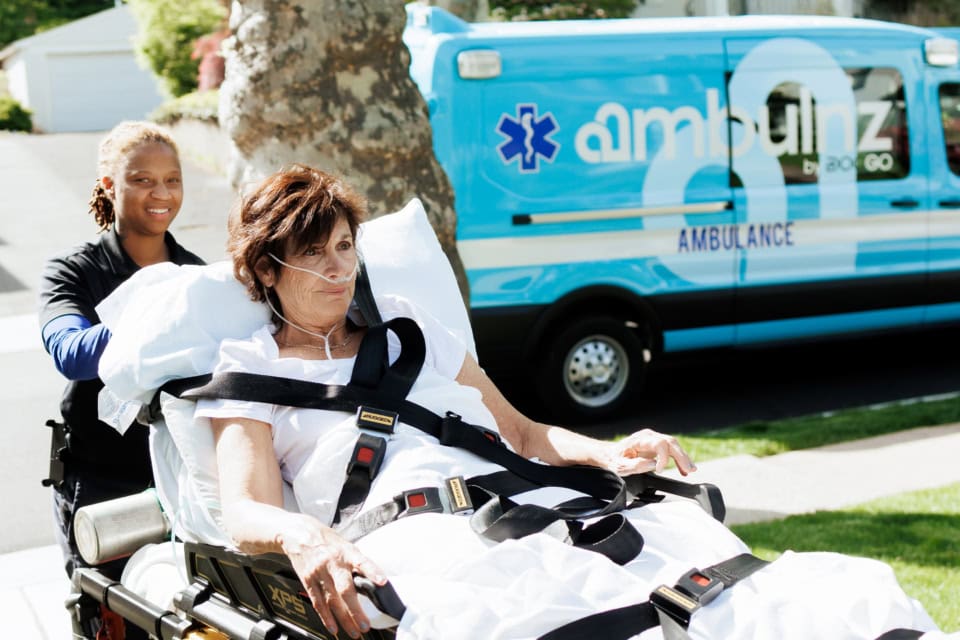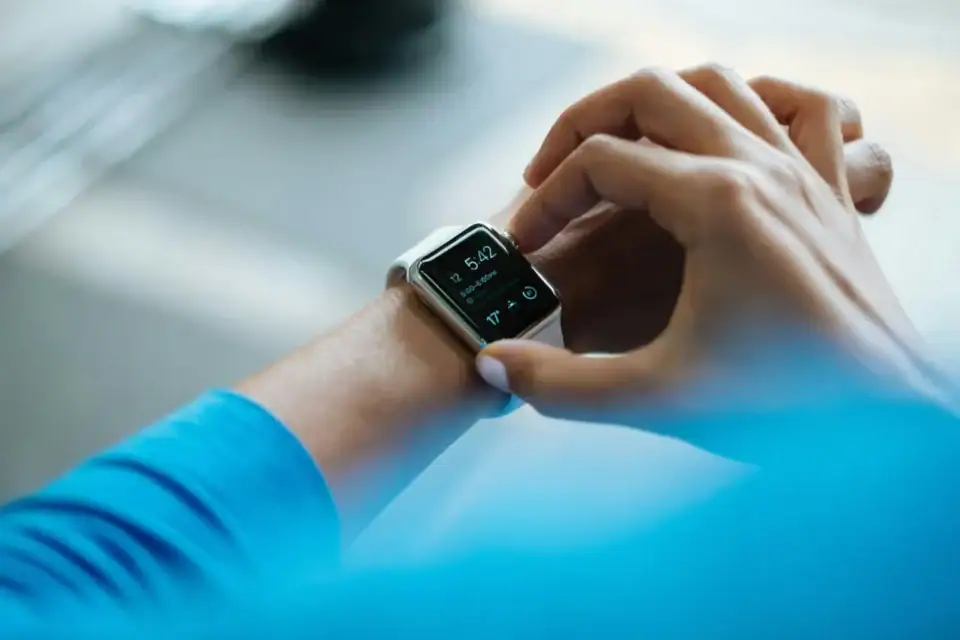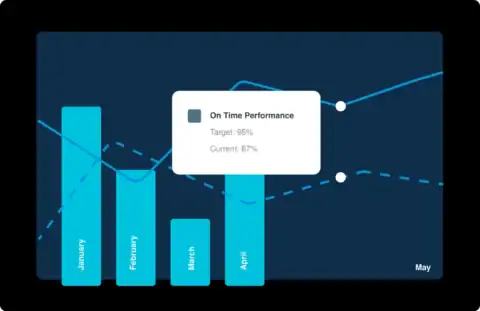Supporting patients at every step of their journey
Imagine a system where every step, from hospital discharge to home recovery and ongoing care management, is seamlessly connected, ensuring no patient is left behind. With DocGo’s backbone of digital technology, this vision is becoming a reality. Supporting patients, caregivers, and facility staff from start to finish requires more than just electronic medical records or improved ambulance services. The digital transformation of healthcare necessitates redefining the entire patient experience, leveraging technology to shift from reactive, one-time treatments to preemptive and proactive care.
How it Works – Brenda’s Story
Brenda is a representative example of a DocGo patient who was hospitalized for complications from a chronic heart condition. Ahead of Brenda’s discharge, her case manager used DocGo’s online digital ordering platform to schedule her medical transport home with one click directly from the patient chart in the hospital’s electronic health record. The platform goes beyond merely scheduling transports; it also aided her case manager in evaluating the appropriate level of support required to ensure Brenda reached home swiftly and safely.
From the moment the transport was scheduled, Brenda and her family members received a text message via DocGo’s Sharelink —informing them exactly when the ambulance would arrive and providing the names of the assigned DocGo EMTs. Relieved by the clear communication, Brenda felt well cared for before she even left the hospital.
Optimizing Hospital Discharge
During discharge, Brenda’s insurance information and demographics were automatically pulled from the hospital’s Electronic Medical Record (EMR) into DocGo’s platform. The case manager used DocGo’s ordering platform to see that Brenda was enrolled in a value-based Medicare Advantage health plan, and identified Brenda for DocGo’s transitional care program for post-discharge follow-up. Before being discharged from the hospital, the DocGo team contacted Brenda to discuss the importance of a post-discharge follow-up visit and scheduled a home visit within 48-hours of her planned discharge. Following discharge from the hospital, the DocGo team dropped off Brenda at her home. The result was a highly orchestrated experience, with Brenda comforted that her plan and care details were seamlessly managed.

Post-Discharge Follow-Up and Transitional Care
Once arriving home, Brenda tracked and managed her appointments through DocGo’s patient app and used the two-way chat feature to address any concerns as needed. Within 48-hours post-discharge, the team visited Brenda in her home to walk her through her medication program, ensure compliance with her physician’s care plan, check her vitals with connected monitoring devices and make sure she understood her care plan. The visit connected on-site licensed practical nurses with advanced practice providers via a telehealth platform, enhancing Brenda’s care with expert oversight. While transitional care management visits are expected to happen within 7-14 days post-discharge, DocGo’s analytics team has identified the engagement and outcome impact is maximized when the visit is conducted within 48-hours and have standardized this within DocGo’s transitional care management program.
Based on clinical protocols, the DocGo team met with Brenda twice more – once in person, and once through DocGo’s telehealth platform – and at the same time, her care reports and key health data were provided digitally to both Brenda’s health system and her health plan – both partners of DocGo. With all parties better informed, DocGo’s transitional care programs like Brenda’s have helped support statistically significant reductions in all-cause readmission rate to the hospital.

Ongoing Care Management Programs
As a final step, DocGo’s records showed that Brenda has one or more chronic diseases – in this case, congestive heart failure. DocGo reached out to enroll her in an ongoing virtual care management program with remote patient monitoring (RPM). RPM equipment was delivered to her home and set up by clinicians during a transitional care visit. Through the virtual care management program, Brenda received key vitals monitoring and ongoing health coaching to ensure she closely followed her physician’s plan.
Any meaningful changes in Brenda’s vitals were escalated to her primary care physicians and the cardiology team at the health system. With better management of Brenda’s chronic condition, her health and quality of life improved – all without frequent visits to the emergency room. And when Brenda did see her cardiologist at the hospital or her primary care physician, the physicians had significant additional data points to make informed adjustments to her care plan.

Every Step of the Journey
Brenda’s journey with DocGo shows the transformative potential of digital healthcare platforms to improve patient outcomes, streamline care and reduce the total cost of care for hospitals and health plans. Thanks to DocGo’s innovative approach, Brenda’s story is just one of many that illustrate a future where technology bridges the gap between hospital care and home recovery, transforming lives – one patient at a time.








